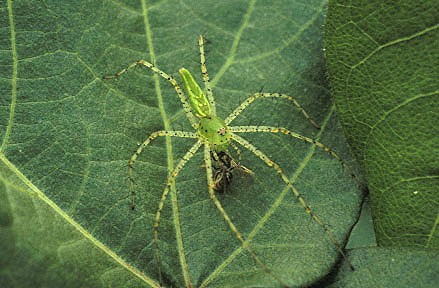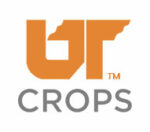LINKS
Spiders
Scott Stewart (University of Tennessee) and Blake Layton (Mississippi State University), Department of Entomology and Plant Pathology
General Comments:
 There are many different species of spiders that are found in fields of cotton, corn, soybean and other crops. All spiders are predatory, and they may be more abundant than any other predatory arthropods found in row crops. The hunting and feeding habits of spiders vary greatly among the different species. Many are generalist and may feed upon a wide range of crop pests. However, they may also feed indiscriminately on other invertebrates, including beneficial insects.
There are many different species of spiders that are found in fields of cotton, corn, soybean and other crops. All spiders are predatory, and they may be more abundant than any other predatory arthropods found in row crops. The hunting and feeding habits of spiders vary greatly among the different species. Many are generalist and may feed upon a wide range of crop pests. However, they may also feed indiscriminately on other invertebrates, including beneficial insects.
Description:
Spiders are not insects, but rather are arachnids belonging to the order Araneae. Although some species are venomous, such as the black widow, most are harmless. The body of spiders is divided into two parts, the cephalothorax (with mouthparts, legs and eyes) and the abdomen. Unlike insects, which have three pairs of legs, spiders possess eight legs. Immature and adult spiders are similar in these characteristics. Adults typically range in size from 1/8 – 1 1/2 inches in length, depending upon the species. Common representatives seen in cotton include jumping spiders, crab spiders, lynx spiders (including the green lynx pictured above), and orb weavers.
Prey (Hosts):
The prey of spiders varies greatly depending upon the species and their size, with small species or immature spiders feeding on smaller prey, but most feed upon other arthropods such as insects and other spiders. Some species feed upon insects that become entangled in silken webs. Other species are hunting spiders, actively seeking and ambushing their prey. It is not entirely clear just how important spiders are in preventing pest outbreaks, but one thing is for certain, they are very common in fields of row crops and will feed on a wide array of pests including plant bugs and various caterpillar pests.







